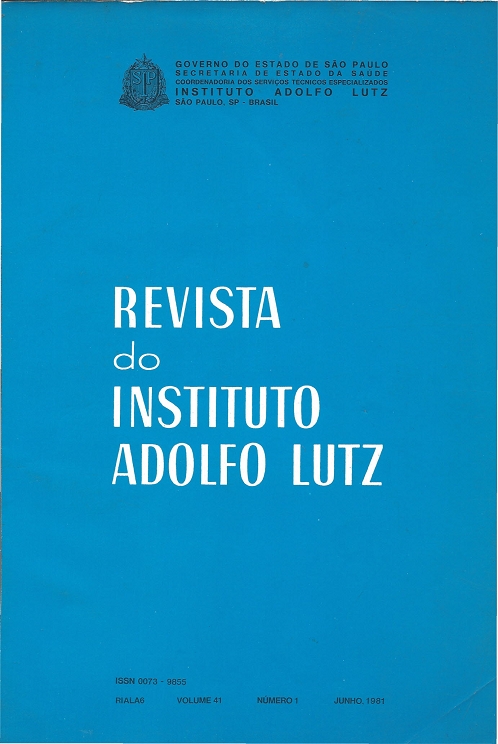Abstract
In order to evaluate the mercury bi-iodide (HgI.) as a preservative, this chernical was studied regarding its ability to preserve biological material and to avoid agglutination of particles. To the sediment obtained from 400 stool specimens, mercuric potassium iodide was dissolved in íormaldehyde, alcohol and physiologic saline solution, at a concentration of 0.2%. To one volume of fecal sediment, three volumes of the preserva tive were added in each of 400 stool specimens. The experiment was repeated using, this time, 0.1% of the preservative prepared with benzene, alcohol and iso toriic saline solution. The results were compared with those obtained with standard preservatives such as Railliet and Henry, Schaudinn and MIF (merthiolate, iodine and formaldehyde). Observations done after six months revealed that 0.2% mercuric potassium iodide solution (first method) suitably preserved cysts and trophozoites of protozoa as well as eggs and adult worms of helminths, excep t eggs of Hymenolepis nana and Hymenolepis diminuta, which demonstrated better preservation when the second method was employed. The controle presented similar results. It was found that mercuric potassium íodide does not agglutinate stool particles.
References
2. FAUST, E.C.; D'ANTONI, J.S.; ODOM, V.; M.ILLE"R, M.J.; PERES, C.; SA WITZ, W.; THOMEN, L.F.: TOBIE, J. & WALKER, J.H. - A critical study of clinical laboratory technics for the diagnosis of protozoan cysts and helminth eggs in feces. r. Preliminary communication, Amer. J. trop. Med., 18:169-83, 1938.
3. HOFFMAN, W.A.; PONS, S.A. & JANER, J.L. - The sedimentation-concentration method in schistosomiasis mansoni. Puerto Rico J. publ. Hlth trop. Med., 9 :283-98, 1934.
4. JUNOD, CH. - Technique ccprologiqus nouvelle essentiellement destinée a Ia concentration des trophozo'ites d'amibes. Bull. Soc._Pathol. exot., 65 :390-8, 1972.
5. RAILLIET, A. & HENRY, A.C.L. apud AMATO NETO, V. & CORRÊA, L.L. - Exame parasitológico das fezes. 4a ed. São Paulo, Sarvier, 1980. p. 95.
6. RITCHIE, L.S. - An ether sedimentation technique for routine stool examinations. Bull. V.S. Army med. Dep., 8:326, 1948.
7. SAPERO, J.J. & LA WLESS, D.K. - The "MIF" stain-preservation technique for the identification of protozoa. Amer. J. trop. Med. Hyg., 2:613-9, 1953.
8. SCHAUDINN, F. apud CRAIG, C.F.1, p. 46.
9. WALTER-HALBERSTADT, P. Wissen-schaftlicher Teil. Steril-Catgut. Apothekerzeitung, Berlin, 47: 1449-50, 1932.

This work is licensed under a Creative Commons Attribution 4.0 International License.
Copyright (c) 1981 Instituto Adolfo Lutz Journal
